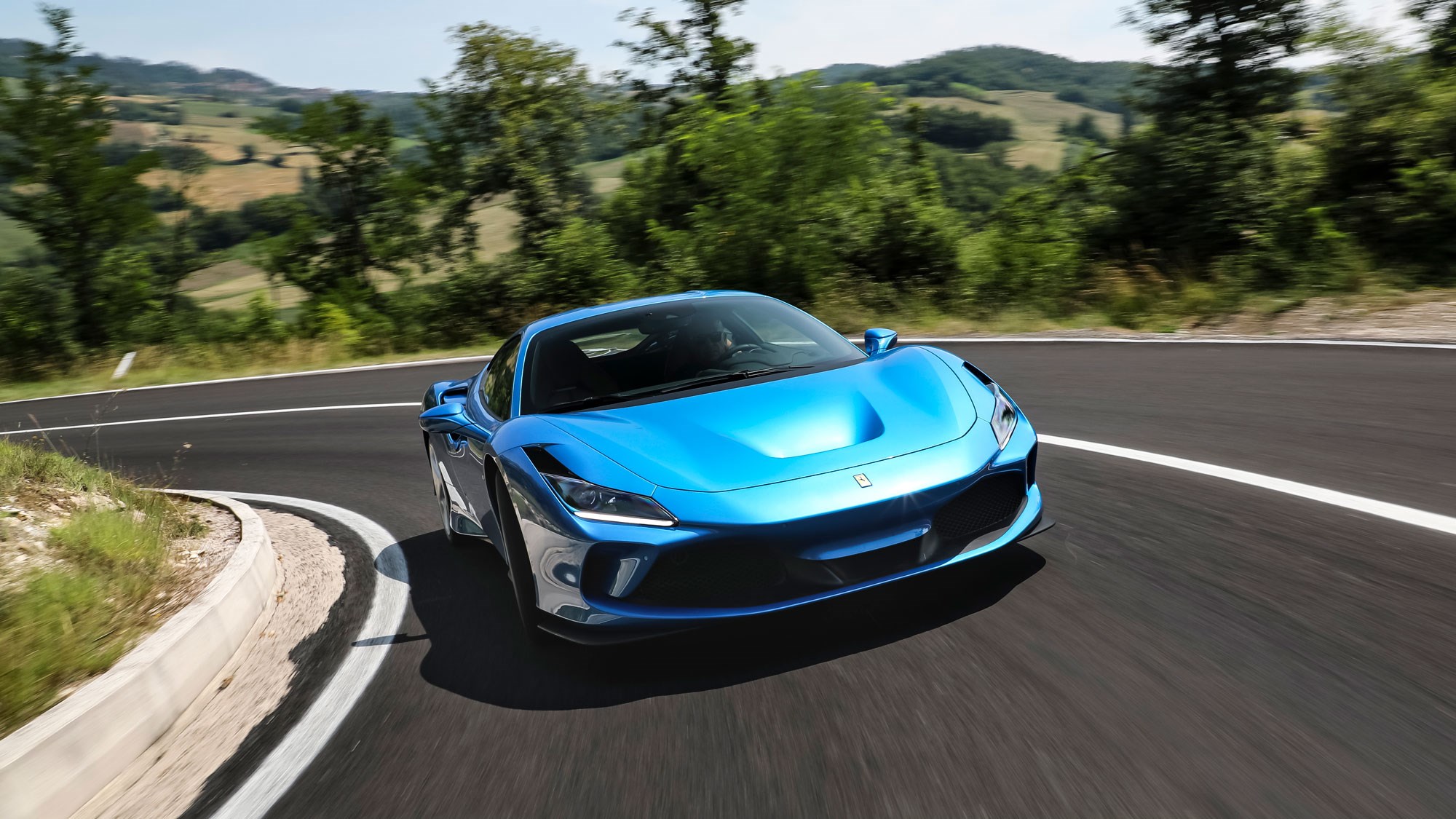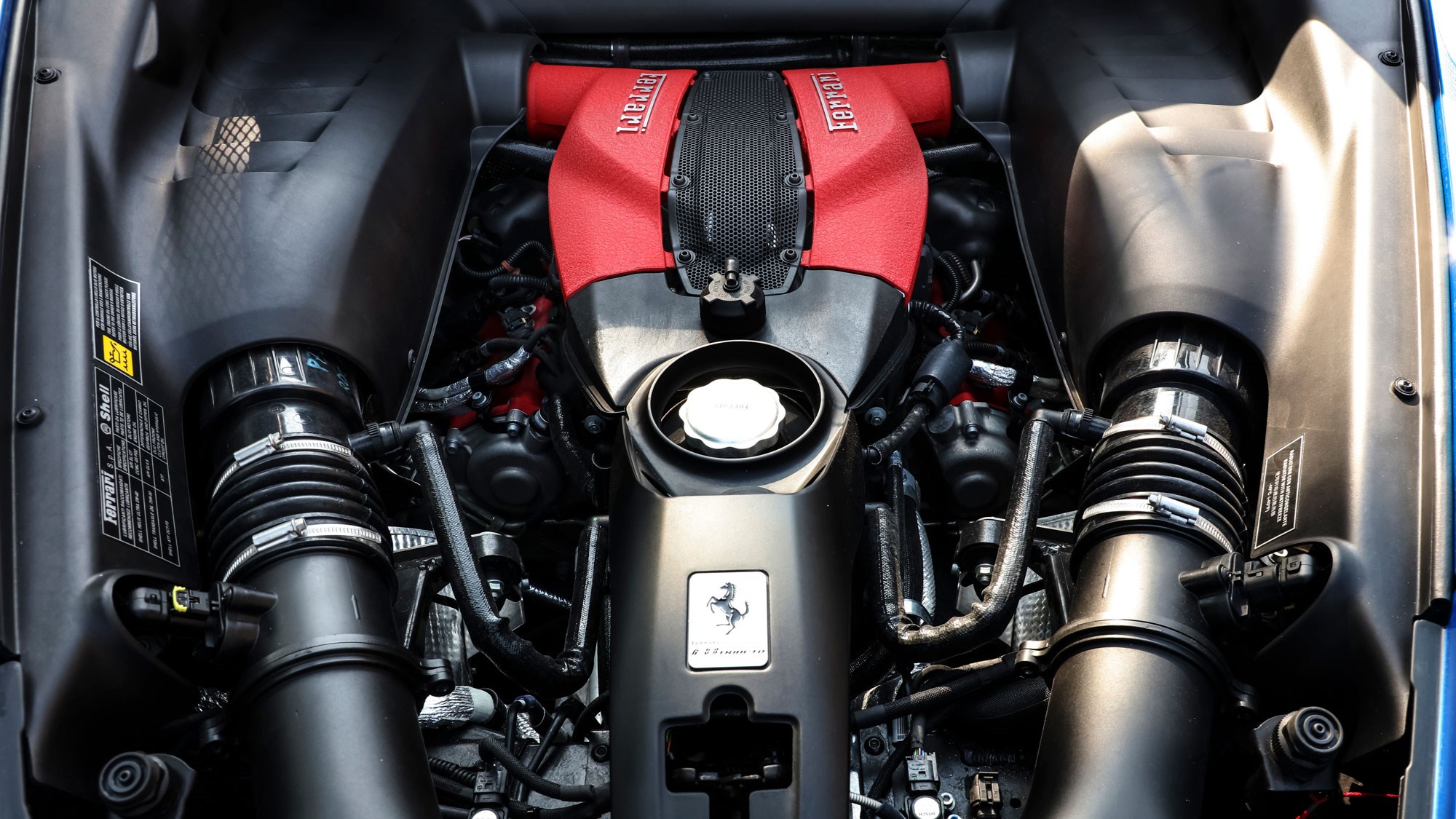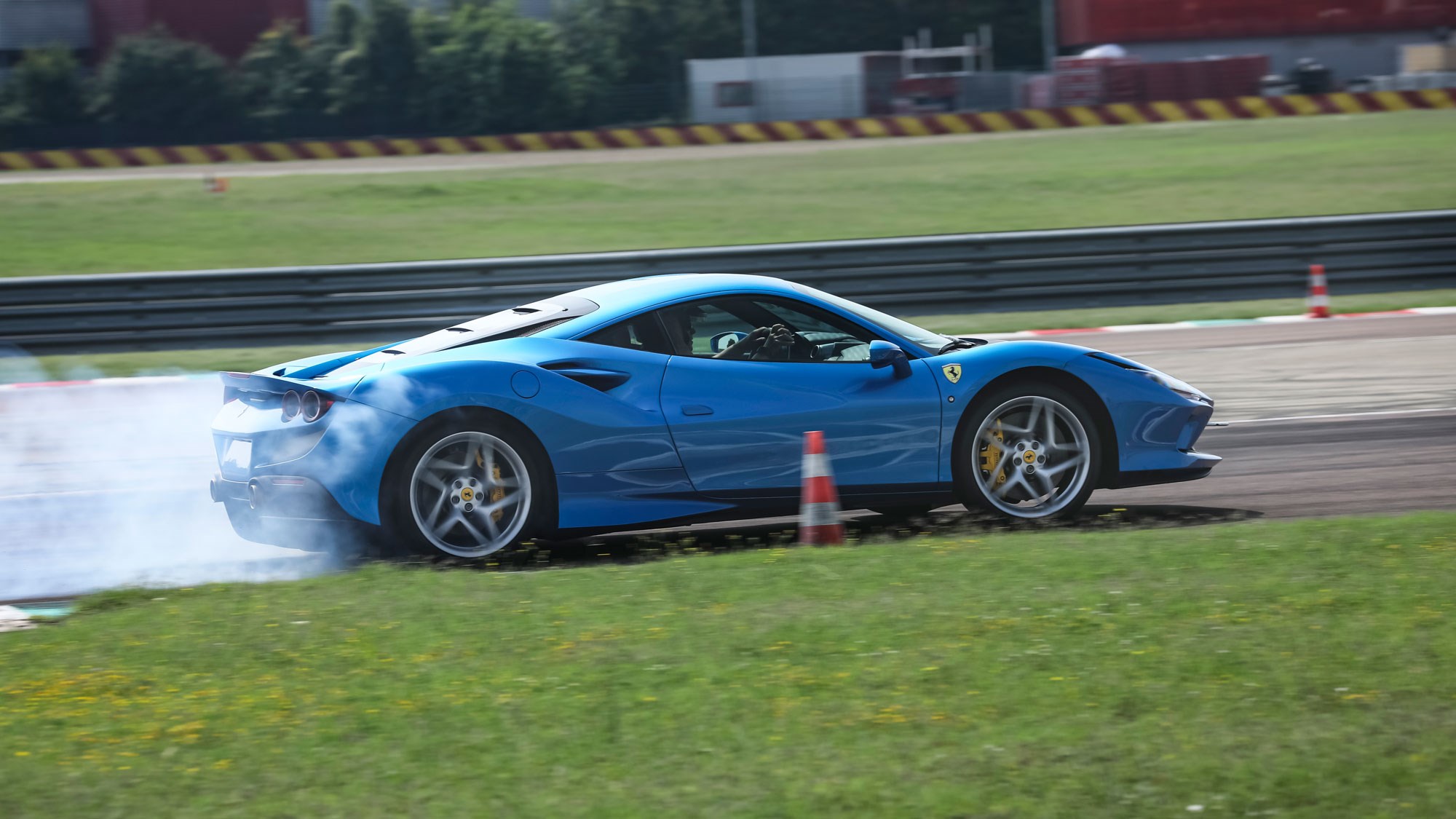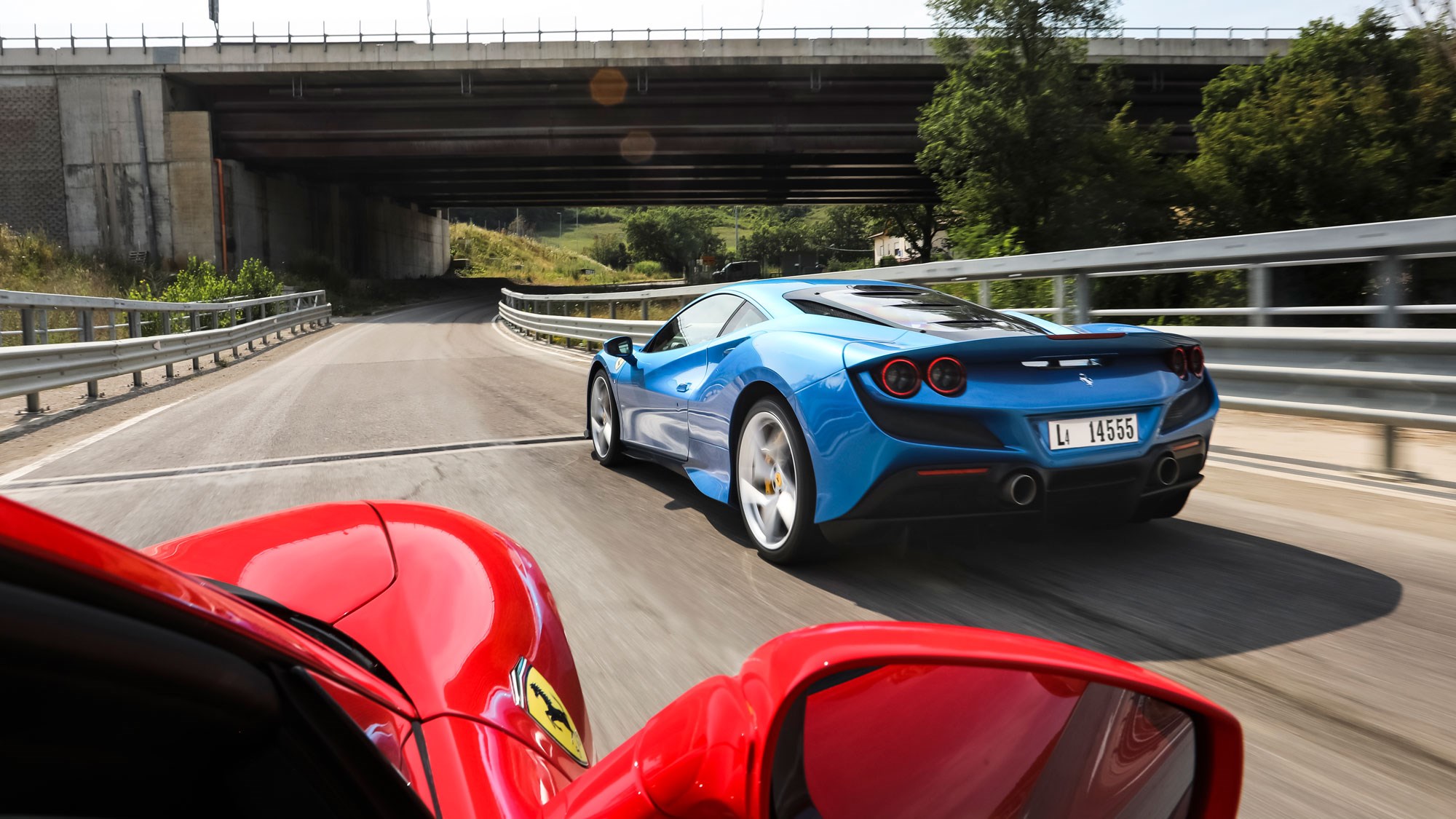► A tribute to Ferrari’s V8 turbo…
► We drive new F8 Tributo supercar
► Engine from Pista, costs £203,476
For years we’ve been able to set our clocks to Ferrari’s mid-engined V8 product plan. Usually it goes: launch an all-new model, a few years later launch a track-focused version, then update the platform (a ‘modificato’ in Maranello-speak) and repeat. Hence 458 Italia, 458 Speciale, then ‘modificato’ 488 GTB and 488 Pista.
If everything went as predicted this time around, the next entirely predictable step would be an all-new model. Instead we get the F8 Tributo, which cuts the 2015 488 GTB’s lifespan shorter than usual and becomes the second ‘modificato’ to be spun off the platform introduced in 2009 for the 458 Italia.
Essentially the F8 drops the track-biased Pista’s 710bhp V8 engine in the road-biased GTB’s chassis, splits the difference on weight, downforce and lap times, then wraps the lot in a new design with a lightly refreshed interior. Ferrari says the F8 can lap its Fiorano test track in 1min 22.5sec – 0.5sec faster than a GTB, if a second down on the Pista.
Our Ferrari 488 Pista review

The F8 Tributo costs £203,476, meaning a circa £6k premium over the now discontinued GTB, but a £50k saving over the Pista.
What’s this a Tributo to?
Not the shortcut key at the top of your keyboard, but Ferrari’s own V8 turbo engine, apparently, serial winner of International Engine of the Year gongs. Upgrading the ‘entry-level’ £200k V8 to Pista engine spec increases performance by 49bhp over the GTB, and puts Ferrari back on equal terms with the 710bhp McLaren 720S. So displacement still stands at 3.9 litres, but 50 per cent of hardware is new, and the engine is 18kg lighter, thanks to parts including titanium con-rods, Inconel manifolds and titanium-aluminium turbo turbine wheels.
New European and Chinese emissions regulations have necessitated a new gasoline particulate filter, and there are some light top-end tweaks to allow the engine to produce identical performance.
The chassis, meanwhile, carries over from the GTB, though to be fair the Pista got only 10 per cent stiffer springs and Michelin Pilot Sport Cup 2 tyres anyway. On the latter, an important point: while the GTB wasn’t offered with optional Cups, the F8 is. Spec the Cups and Ferrari insiders estimate the F8’s lap-time deficit to the Pista would drop to just half-a-second or so.

We’re driving the Fiorano test track on the Cups, before switching to Pirelli P Zeros for the road.
Revised electronics are new to the F8, which gets version 6.1 of Ferrari’s Side Slip Angle Control and Dynamic Enhancer. In simplistic terms, this is an advanced kind of stability control that allows the driver a large amount of freedom to slide the car while very subtly intervening in the background to keep everything under control. While handy for pointless showboating, the new system should also work during the extremes of setting quick lap times.
Tell me about the design…
All body panels are new save for the roof and doors, there are references to Maranello’s V8 back catalogue in the lightweight Lexan rear screen (inspired by F40; distorts following traffic a little, but not catastrophically) and quad rear lights (288 GTO, F40, F355), plus aero tricks including the S-duct in the front bumper and a new rear spoiler (downforce is +10% over GTB, -10% versus Pista), and lighter bumpers front and rear that contribute to a 40kg weight saving at 1330kg dry. You will, however, need horrendously expensive and optional carbon wheels to reap 10kg of that. A Pista remains 50kg lighter.

Inside, it’s largely familiar, but the dash, door cards and centre tunnel are said to be redesigned, and there’s a slightly smaller steering wheel with – at last! – improved operating logic for the controls on it. So the indicators have a more positive click of engagement, and the baffling windscreen wiper button is replaced by a thumb wheel.
How does the F8 Tributo drive?
Our first taste is on the Fiorano test track, where the faster-spinning, more powerful engine results in two notable differences versus a GTB. Firstly, the engine spins to its 8000rpm rev limit (1000rpm lower than the old naturally aspirated 4.5-litre V8) even more ferociously, so it takes some reacclimatisation to click the right-hand gearshift paddle before the electronics cut the fun. And the GTB always did feel a little short of headroom on a track compared with its naturally aspirated predecessors.
Secondly, the extra 49bhp helps make the F8 an even more playful machine. The chassis plays a big role in this of course: the F8 has the GTB’s slightly softer suspension settings, but it also turns in very eagerly thanks to fast steering, is highly resistant to understeer and has carbon-ceramic brakes with the stopping power to knock off big speeds in tiny spaces – just like the Pista and GTB.

So the F8 stops and it turns in unbelievably promptly, but then it likes to pivot about its centre-point and oversteer, whether you’re carrying excess speed in to a corner, or burying the throttle a bit early on the way out. It is perfectly possible to drive the F8 neatly on track, but it will readily dance about if you’re getting close to its potential, it’s just what it does: it’s up on its toes, flighty, compulsively reactive and throttle steerable in the extreme. The fun part is taming the flamboyancy just enough to keep the F8 moving quickly and not dropping too much time. Thankfully, lag-free response and linear deliver from the twin-turbo V8 make this a very driveable machine at the limit.

Side Slip Angle Control and Dynamic Enhancer mostly proves its worth, too, allowing all the lateral freedom required when driving a quick lap in the ‘CT off’ setting (only ESC off leaves you completely unattended), with only the occasional intrusion noticeable in off-throttle moments with corrective steering lock. It’s a very impressive system and I suspect it did make me quicker when driving a purposefully OTT lap.
If anything, the F8’s 710bhp didn’t feel quite as feral as the last Pista I drove, perhaps because the F8 is around 40kg heavier, and perhaps also because the really-very-fast-gear-shifts don’t have the Pista’s ‘gun shot’ shift – a more visceral engagement designed to extract every last fraction of lap time. But by just about any other context, this is an explosively ferocious powertrain.
How does it feel on the road?
Ferrari logically bills the F8 as having the performance of the Pista with the comfort of the GTB. It’s a few years since I last drove a GTB so it’s perfectly possible I’m misremembering, but if anything the chassis feels slightly firmer than a GTB’s. And yet its secondary compliance in the ‘bumpy road’ setting is astonishing, keeping the body flat and calming the whole car down, even on really quite tricky undulating surfaces. For the rear axle, it’s key in making 710bhp feel so useable on the road, because compliance helps the traction; for the front, it ensures the tyres that turn stay in contact with the road, helping to make braking performance even more effective.
The steering, similarly, has an unflappable consistency: yes, this is an aggressively fast ratio that lends the F8 an agility and urgency in the way it swivels into corners (I cannot imagine this thing with rear-wheel steering), but it’s tempered by weight and definition that pervades every tiny increment of steering lock, plus a quite relaxed self-centring effect, so you’re never twirling through anything remotely vague in feel. Again, it helps calm the F8 down.

Despite this, the F8 is never less than buzzing with energy and instantly reactive, whether that’s the instant punch of its dual-clutch gear shifts, the way the turbos spool so rapidly or the eagerness of the chassis either to swoop in to an apex or almost casually oversteer if the mood takes you – it’s so easy given 568lb ft of torque. It’s a car that constantly gives you options on how best to dictate its line.
Two things: the gasoline particulate filter has lent this engine a gruffer, grittier edge, particularly at lower revs, and the turn-in isn’t quite as incisive as a Pista, but then that’s a £50k pricier, slightly stiffer, lighter and more track-focussed car that wears Cup 2s, not the Pirelli P Zeros of the road car we tested. It’s understandable. But I also don’t think the Pista gives up an awful lot in comfort.
Ferrari F8 Tributo: verdict
Overall, the F8 is a supercar that absolutely immerses you in the excitement of driving, but delivers those thrills in a package that feels perfectly useable for regular journeys. Perhaps inevitably, I’d take a Pista if shown both sets of keys, and GTB owners shouldn’t feel particularly miffed at not having the very latest thing, but as a car that delivers so much of the Pista with the extra usability and luxury of the GTB, well, I think it’s mission accomplished, F8.
More Ferrari reviews by CAR magazine